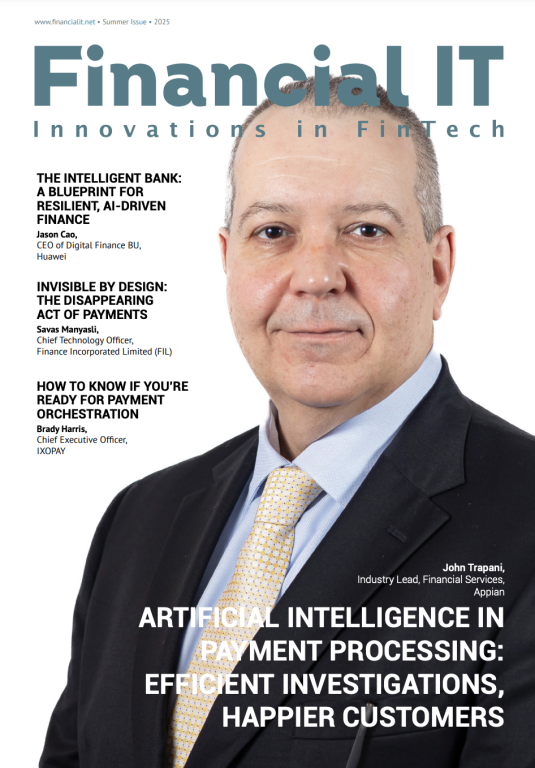Securing Identity with Innovation
- 13.06.2025 -- 02:11 pm
- Eduardo Azanza , CEO , Veridas
Financial IT: Eduardo, thank you for joining us. To begin, can you give us an overview of Veridas and the core mission behind the company? Eduardo Azanza: Thank you. Veridas was founded 10 years ago with a very clear mission: to determine whether a digital identity is real or fake. In a world where it’s easier than ever to fabricate identities, that...
Navigating Regulatory Complexity in Payments
- 28.05.2025 -- 11:11 am
- Dean Francis, Senior Business Development Manager, Corlytics
An Interview with Dean Francis, Senior Business Development Manager, Corlytics Financial IT: What kind of regulatory changes are we seeing in the payments space right now? How are recent regulatory shifts affecting the sector, and what trends are you keeping an eye on? Dean Francis: We’re seeing three key areas dominating the regulatory landscape...
Riding the Fintech Wave: An Interview with Zak Westphal
- 10.01.2025 -- 04:40 pm
- Zak Westphal, CEO and Co-Founder, StocksToTrade
The financial technology (fintech) revolution is transforming the finance sector, opening up significant opportunities and challenges for entrepreneurs. As a global fintech leader, the UK has a front-row view of these rapid changes. To help UK founders take advantage of this disruption, we spoke with Zak Westphal, CEO and Co-Founder of StocksToTrade...
Pioneering Global Payments: An Exclusive Q&A with Matthijs Boon, COO of Equals Money
- 17.07.2024 -- 08:45 am
- Matthijs Boon, Chief Operating Officer, Equals Money
Q&A Interview with Matthijs Boon, Chief Operating Officer at Equals Money Financial IT: In your view, what are the biggest trends shaping the future of global payments, and how is Equals Money positioned to capitalise on these trends? Matthijs Boon: The world is becoming increasingly global, with more businesses serving clients across diverse...
Transforming Client Lifecycle Management with AI
- 17.07.2024 -- 08:38 am
- Stella Fau Clarke, CSMO, Fenergo
Financial IT: Could you tell us more about how Fenergo leverages AI to enhance the client lifecycle management process? Stella Fau Clarke: Absolutely. Client lifecycle management is an area that significantly benefits from AI due to its complexity and time-consuming nature, which directly impacts the client experience. At Fenergo, we adopt a...
GFT and Engine by Starling: Revolutionising Banking Technology
- 01.07.2024 -- 10:08 am
- Paul Sweeney, Solution Architect at Engine by Starling, Richard Kalas, Client Solutions Director, Retail Banking, GFT
Financial IT caught up with Paul Sweeney, Solution Architect, Engine by Starling and Richard Kalas, Client Solutions Director, Retail Banking, GFT at Money20/20 Europe to discuss how they are modernising banking technology. Nodira Sadikova, Financial IT: Financial IT is thrilled to have two distinguished guests with us: Paul Sweeney, Solution...
Driving Innovation in Cross-Border Payments: An Interview with Roisin Levine of Wise
- 26.06.2024 -- 08:47 am
- Roisin Levine, Head of UK & Europe Partnerships , Wise
Interview with Roisin Levine, Head of UK & Europe Partnerships at Wise Financial IT: Since our last discussion at Money 20/20, can you provide an overview of the growth Wise Platform has experienced? Roisin Levine: We've grown a lot in the last few years. Ultimately, what Wise Platform is all about is providing the infrastructure...
Innovating Identity Verification: Insights from Trulioo's Steve Munford
- 26.06.2024 -- 06:58 am
- Steve Munford, CEO, Trulioo
Interview with Steve Munford, CEO, Trulioo Financial IT: Can you provide an overview of Trulioo's role in the global identity verification landscape and how it has evolved over the years? Steve Munford: We help customers digitally onboard businesses and consumers worldwide. Our product specifically assists with the KYC (Know Your Customer...


















